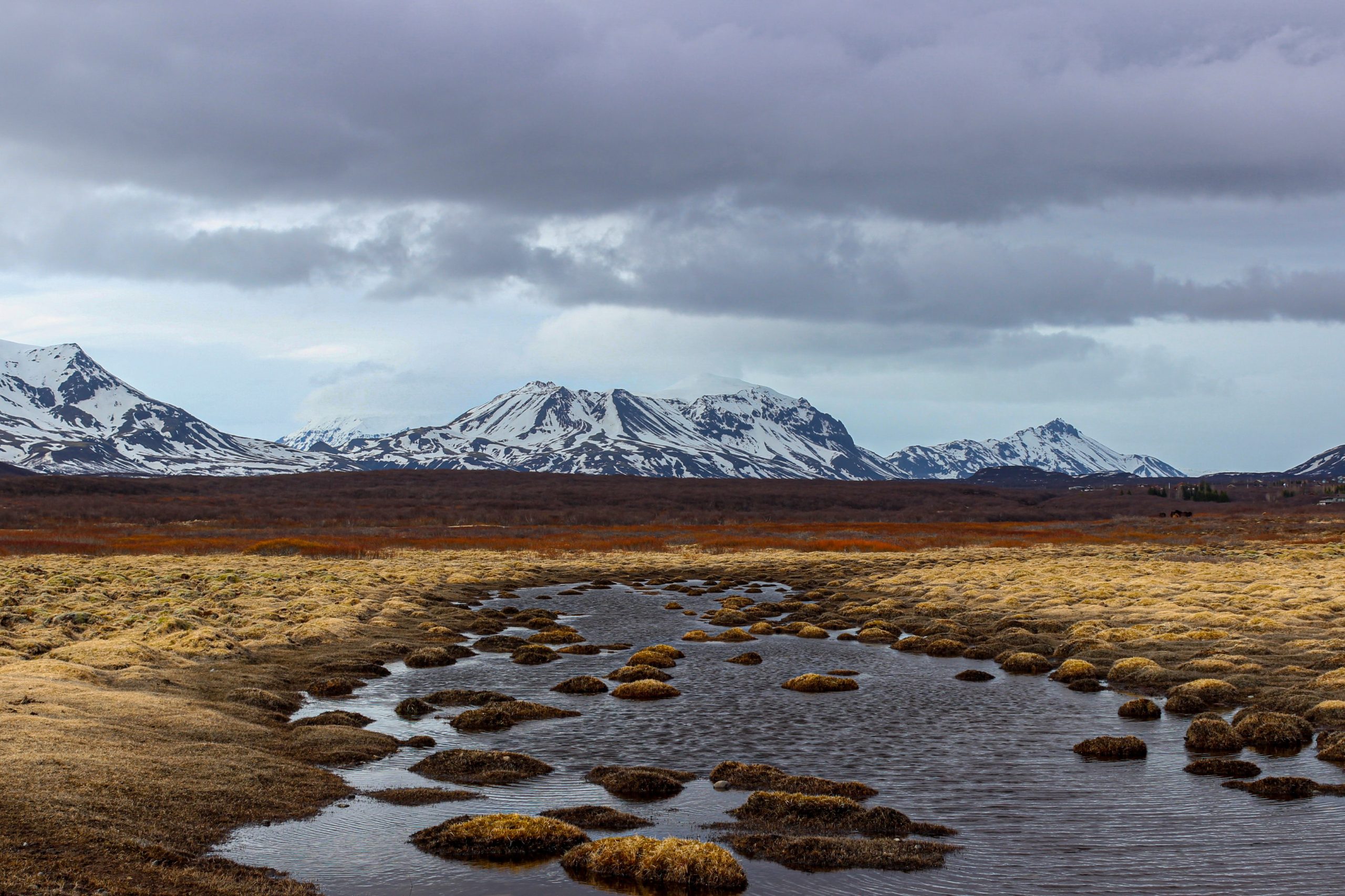The Arctic permafrost zone is proving to be one of the many frontiers in the impending battle to reverse climate change. This past summer, climate scientists sounded a loud alarm – the Arctic is warming at more than twice the global rate and this warming together alongside increasing wildfires are accelerating the thaw of the Northern permafrost. Permafrost can be described as large swaths of permanently frozen ground that spreads across countries like Russia, Canada, United States etc. Permafrost zones are becoming increasingly subject to carbon-cycle positive feedbacks – a series of processes that is fuelled by planetary warming and allows more carbon escape into the atmosphere from the rapidly thawing land. While no country has a coherent strategy to tackle this permafrost feedback challenge, two scientists in other-worldly Siberia are taking a uniquely experimental approach to handle this issue. This experimental project known as Pleistocene Park (aptly named after the last geological epoch when the Arctic was home to millions of animals including the woolly mammoth) intends to rewild extensive swaths of the Arctic by settling thousands of animals on highly productive grazing areas.
Pleistocene Park was pioneered by famous scientist Sergey Zimov and is currently headed by his son, Nikita Zimov. Nikita has lived on the Northeast scientific station since early childhood and left the region briefly in 1998 to attend university and returned in 2004. In a brief chat with Nikita, we discussed the inspiration behind the rewilding project, its potential and possible future pathways for the park.
Background
Originally Pleistocene Park was conceived as a rewilding project to convert the low-producing Arctic tundra to a productive grassland ecosystem. Sergey Zimov who pioneered this project noticed two things;
- That the permafrost across the Arctic was getting eroded quickly
- That whenever there is any form of disturbance in the modern Arctic, whether fire or the presence of automobile vehicles, animal and human presence, grasses start to dominate even in the cold climate.
So, based on these two discoveries, he concluded that in the past, the millions of animals who inhabited the Arctic created this disturbance effect through roaming, therefore allowing grasses to be the dominant vegetation in the ecosystem. Pleistocene Park was started as an experiment to replicate that disturbance effect in the Arctic region by resettling animals in a grassland ecosystem. The urgency for this project is underlined by the current state of the permafrost which is a ticking carbon time-bomb that can release vast amounts of greenhouse gases into the atmosphere. However, this highly productive grazing ecosystem being proposed in the Arctic helps to maintain the cold state of the permafrost as animals in the park trample down the snow into soil. All these phenomena make Pleistocene Park a potentially formidable bulwark against climate change.
Gauging the risk factor and potential impact
I know, tackling global warming in Siberia sounds almost as unhelpful as diverting floods away from the Sahara but that is a limited viewpoint. 60% of Russian territory is in the permafrost zone, if the permafrost continues on the path of degradation, a large portion of public infrastructure will be severely destroyed due to the melting of ice and the resulting depression in the landscape. Buildings, roads, pipelines or railway tracks will be damaged. Furthermore, Russia’s agricultural base in the Southwestern and Western regions of the country may have to be relocated if the Earth continues to get warmer. This will be an expensive adjustment for the government, for the agricultural businesses and for everyone in general. Therefore, a rewilding project with the potential of encapsulating as much space as 3 million km2. seems equal to the task at hand. A grassland ecosystem of that size can sequester 2-3 times more carbon than the total amount of emissions Russia creates annually and in the carbon market, this could yield an income comparable to what Russia makes from oil and gas.
The benefits of this approach to the surrounding environment include economic development, tourism, sustainable meat production and a rich ecosystem that improves the quality of life for the indigenous people. Due to the isolated location of Pleistocene Park, the activities on the park are conducted far away from human or animal populations of any kind, therefore there is usually no ecological conflict of interest.
Carbon sequestration through grass instead of forests
Forests are commonly referred to as the metaphorical lungs through which the earth breathes and this is because they absorb nearly 40 percent of the fossil-fuel emissions we produce. While this fact is very applicable to the tropics, in the Arctic, the case is vice-versa. Arctic trees take a longer time to grow, are much smaller than those in the tropics and there remains the risk of forest fires despite the sparse tree population. Arctic soils on the other hand are cold and frozen for most of the year, therefore the decomposition process that goes on within them is much slower. Replacing Arctic trees with grass vegetation makes a lot of difference because grass plants can form deeper roots unlike trees in the Arctic that have their roots on the soil surface. Potentially Arctic soils can accumulate up to 100 kilograms of carbon per square metre which is 50 times more than what can be stored in the wood biomass in the region. Moreover, building a wide swath of grassland in the Arctic also contributes significantly to the health and fertility of the soils there.
Animals on the Park
Pleistocene Park is still a small-scale experiment with 20 kilometres of fence and 150 animals right now and the immediate plan is to expand the fenced territory in a few years to 144 square kilometres. The next phase of the project involves extending the fenced area to accommodate 2000-3000 animals. In the past, different species of animals like sheep, cows, yaks have been introduced in the park, but the current focus is on procuring animals such as Bisons, Muskoxen, Yakutian horses etc. As long as there is sufficient forage and an animal population adapted to the area, there will be a 20-30% increase in population annually. With this growth rate in mind, a population of 1000 animals can explode exponentially within a couple of decades.
When the milestone of 2000 animals in the park is achieved, the introduction of predator species will be considered as they are an important component of a sustainable grazing ecosystem. Herbivores will naturally overgraze and overpopulate if they are not properly balanced and shepherded by a predator population, therefore introducing predators will help maintain a healthy pasture and moderate grazing density among the herbivores. According to Nikita’s estimation, a population of 3000 animals in the park is needed to obtain proof of concept, to know what works and what does not, however for the project to have any significant bearing on reversing climate change, tens of millions of animals will be needed to populate the region.
Concerning the adaptability of animals to the region, Nikita is more optimistic. He believes the main issue has little to do with the temperature but rather the yearlong availability of forage. The main challenge is creating productive pastures that will give enough energy even in winter when animals have to dig through the snow to get to the forage. However, with proper grass cultivation in Arctic soils during the growing season from June to early September, the vegetation remains frozen down with all the nutrients intact, providing herbivores with fresh grass even in the winter season.
The Near Future
Pleistocene Park remains open to all forms of collaboration.There has been a lot of traction on the research front and partnership has been struck with other scientists in order to understand the most effective methods for rewilding and converting an ecosystem. Efforts are being made currently to de-extinct the woolly mammoths and resettle them in the park in 6-10 years. Also, the Park received a financial boost earlier in the year, when Alrosa (a Yakutia based diamond company) agreed to fund the expedition to procure 25 muskoxen next year, this will be an important milestone for the park. However, to achieve success on a grander scale, the park needs to acquire more space and millions of animals and that will require huge financial commitments both from the government and other willing financial sponsors.
Conclusion
Pleistocene Park appears like a play for the long-term but that does not discount its seriousness or the urgency of the issues it was set up to correct. There is no silver bullet solution to end climate change, it has to be tackled from different sides using different approaches. While other solutions and approaches are being debated for other geographical regions, Pleistocene Park might be the viable option for the Arctic. In the words of Nikita, “It took billions of humans 300 years to bring this impending crisis to our doorstep and anyone who thinks that there is an easy and cheap solution is overly optimistic”
Pleistocene Park Foundation is a 501(c)3 non-profit organization in the United States.
About The Author

Loni is a communications support strategist with Greenstand (greenstand.org). His skill-set includes content creation, account-based marketing advocacy, copy-writing, channel segmentation, brand storytelling and stakeholder management. He is also a regular contributor with The Impact. He has several years experience in client-facing environments and he is highly interested in applying his professional skills in social development contexts. His passion is at the intersection of climate, renewable energy and circular economy.

